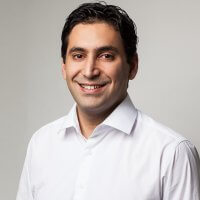Treatment for nearsightedness
Myopic patients are limited in everyday life depending on the severity of the visual impairment. Visual aids such as glasses and contact lenses offer options for correction. Those affected are also more susceptible to pathological changes in the eyes, which can lead to irreparable damage without treatment. That is why we recommend preventive medical checkups for nearsighted people.
Detecting myopia
To detect an existing ( myopia ), we carry out a classic eye test with the help of an eye chart and the Amsel grid test. In this way, the extent of the myopia can be determined in diopters.
Myopia prophylaxis
To prevent secondary diseases of myopia, we recommend regular check-ups. We offer special preventive check-ups for myopia patients to track the creeping process of pathological changes in the eye and, if necessary, be able to respond in good time with appropriate treatment.
Myopia prevention – when to go to the ophthalmologist?
- Myopic patients should take the preventive care once a year from the age of 40.
- In the case of visual disturbances such as flashes or foggy vision or other acute visual disturbances, an ophthalmologist should be consulted immediately.
Myopia treatment
Myopia is not curable but can be corrected. Glasses and contact lenses offer good correction options. The stronger the myopia, the higher the risk of developing abnormal eye changes. Without treatment, these changes lead to irreparable damage.
Laser therapy for severe myopia
A severe myopia can lead to retinal holes or retinal degeneration. Then, as a treatment, a mandatory laser therapy of the retina is carried out in order to prevent the detachment of the retina, which can otherwise lead to complete blindness.
Injection therapy for high myopia
With a high myopia (values above -8 / -9 dioptres), there is the possibility of () myopic choroidal neovascularization (CNV)) – a characteristic severe myopia – which can lead to blindness without treatment.
Macular edema occurs in myopic CNV. Those affected often notice little or nothing at the beginning, and only when the macular edema progresses they notice a reduction in vision. At this stage, therapy is usually more difficult or the prognosis is worse. The earlier the therapy, the better.
You can be diagnosed using OCT and fluorescence angiography. The necessary therapy is then the administration of medication by targeted injection into the eye.
Eye surgery for myopia
Eye surgery for nearsightedness without further secondary diseases carries many risks and is usually not necessary. If you still wish to be treated with refractive surgery, we would be happy to explain the risk-benefit ratio to you and recommend centers that specialize in this area.
Don't be afraid of the ophthalmologist!
Our ophthalmological practice specializes in the detection and treatment of retinal diseases. We use the latest technologies in ophthalmic medicine, work very sensitively, absolutely sterile and particularly precisely, so that examinations and treatment can be experienced quickly and painlessly.



